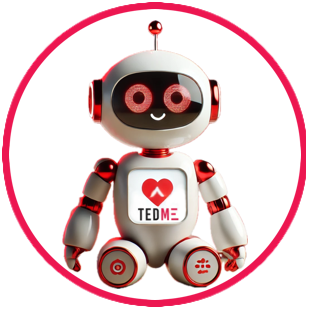Webinars have long since established themselves in the marketing and communication mix of many companies and organisations. However, registration and participation rates are nowhere near as high as they were during the pandemic. In addition to the many alternatives in person, participants have also realised that webinars do not always deliver what they promise. To ensure that you inspire your target group from the invitation to the farewell - and even beyond - we have provided you with 7 crucial tips. From practice for practice.
1. define your webinar objective
Sounds trivial, but it usually isn't. Maybe that's why so many planners skip this step in reality and start right away with webinar planning. Yet this is the key to success.
Because your goal determines the target group, their approach, the content in the webinar and the specific design of the webinar.
2 Target examples:
- Classic lead generation
You want to draw the attention of at least 500 people to the next webinar (= number of registrations), of which at least 100 people should attend live in order to generate 5 demo appointments for your new product at the end. - Typical community building
You want to retain your community and promote networking among each other. At the end, at least 5 new contacts should have been made for each of the participants or 5 conversations with existing contacts should have revitalised the relationship. You want to make your brand memorable and reach at least 100 people via the webinar.

2. define your target group - preferably at persona level
Think very carefully about who the ideal participant for your webinar is. A lot depends on this when designing the webinar, e.g. the acceptance of the digital tools used, the type of approach, the depth of content of the webinar and much more.
2 persona examples:
Enrico Purchaser - Let's assume you want to reach potential buyers for your latest product in the B2B sector. A typical representative of your target group is "Enrico Buyer", who is very quality-conscious when it comes to purchasing, but is initially sceptical about new digital solutions. With this knowledge about your "Enrico buyer" persona, you should rely on easy-to-use and classic voting and interaction tools such as TEDME, which already exude secure operation and GDPR compliance. If you rely on selfie tools or digital photo mosaics right from the start, you could lose this webinar visitor right at the beginning of the webinar.
Nina Networking - Let's assume you want to invite your members to a webinar with a networking character and want to reach personas such as "Nina Networking". She definitely wants to be able to exchange ideas with others during your webinar. For example, via the session chat, which is always included with TEDME, or via breakout sessions in tools such as Zoom, MS Teams and similar. Almost all of these video conferencing tools offer the opportunity to conduct a short speed networking session among the participants. All you have to do for this: Actually include it in the agenda of your webinar. However, if your webinar remains frontal, you will almost certainly lose people like Nina Networking for the next time.

The strength lies in the preparation
Have you defined your goal and target group? Great! You've laid the perfect foundation for the success of your webinar. Now it's important that you plan and rehearse the process meticulously - with each of the participants.
Organise a trial date in which all speakers, the moderator and the technical director take part. Now run through the process and test all the technical details - from screen sharing to the voting tool.
Speaking of the schedule:
Keep a written record of who says what and when. That's enough in bullet points, but this way everyone - from the director to the moderator - knows when the baton passes to whom. This way, no one interrupts others, no one is surprised by questions and you avoid duplication of content.

4. involve your participants BEFORE the webinar
Many planners only start the first survey in the middle or even at the end of the webinar. But that is far too late. The sooner you involve them in the content and let them participate, the higher their engagement during the webinar and afterwards. It is best to start asking for their wishes BEFORE the webinar. Voting tools such as TEDME can help you with this. What you could ask for:
- What are you particularly looking forward to in the webinar?
- Which topics or questions are you particularly interested in?
- What is the biggest hurdle for you when it comes to ABC at the moment?
With TEDME you can display the answers as a word cloud, for example, or as a classic pie chart.

Alternatively, you could also offer a knowledge quiz to test the prior knowledge of your participants or have certain teams compete against each other - e.g. branch A against branch B.

5. set reminders, because calendar entries are patient
How many webinars have you registered for that you neither attended nor watched the recording of afterwards? If you are like many people, then there will be quite a few. As understandable as this behaviour is, it's a shame for your webinar if someone registers but doesn't show up or watch it afterwards.
You should therefore use reminders for your webinars. 3 reminders have proven their worth:
- 1 week before the webinar
- 1 day before the webinar
- 1 hour before the webinar
Depending on the time and target group, other times may also be appropriate.

6 Activate your participants - but in a targeted manner
Based on your webinar objectives and the target group, you can now plan the interactions for the webinar. It is particularly important that these interactions actually contribute to your goal.
If you want to promote community building and reach people like Nina Networking, you need interactions that enable exactly that: Networking. Use the session chat, chat functions among the participants and breakout sessions or speed networking functions.
If you want to generate leads and actively involve people like Enrico Einkäufer in the webinar, ask targeted questions about your products, e.g:
- Which of our products do you already know?
- Are you planning to introduce a solution for ABC in the next few months?
- Which products or services would you like to see from us?
You should be able to export these responses cleanly or integrate or import them into one of your marketing tools. This is the only way to achieve individualised follow-up instead of mass communication based on the scattergun principle.

7. think about the follow-up - quickly and purposefully
Who reacted to your surveys in the webinar and how? Is Enrico Einkäufer planning to implement a solution like the one you offer in the next few months? Then he will certainly be pleased to receive selection tips in a follow-up e-mail after your webinar. If he is already in the middle of implementation, tips for this process can be helpful. In both cases, they will have the feeling that you have understood them and perceive you as a competent contact in this area. This is also the perfect moment to remind them of your solutions and offers.

Conclusion
Webinars are easy to set up and implement. But webinars are only really successful if you address your target group precisely - from the invitation to the last follow-up e-mail. Voting and interaction tools such as TEDME help you to generate valuable knowledge about your target group and then use it in a personalised way.
Want to know more? Then contact us right away.



